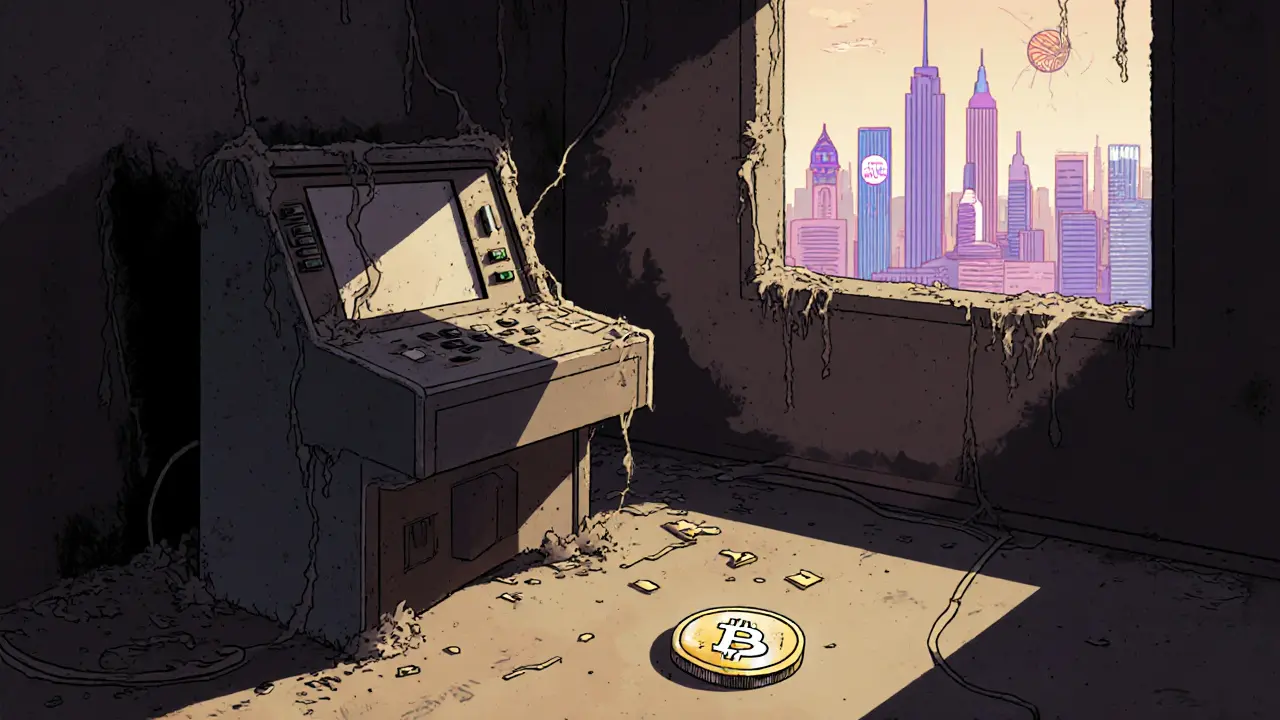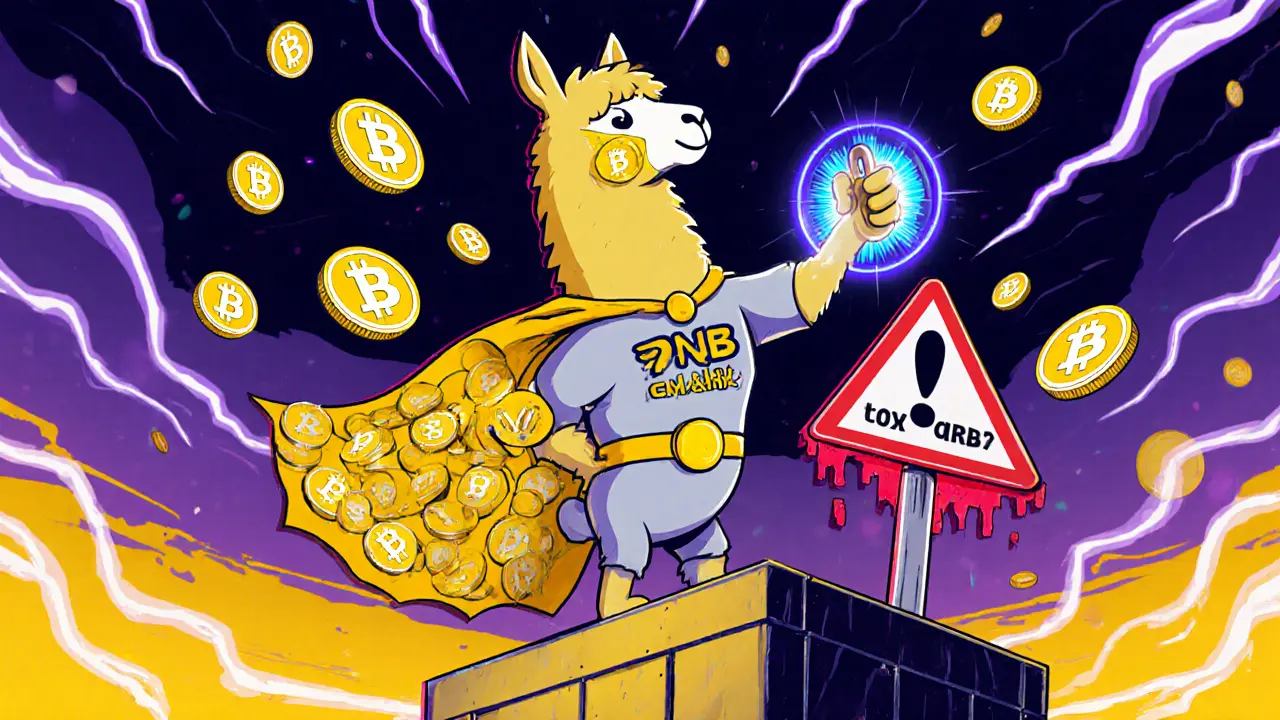Leveraged Yield Farming Calculator
Alpaca Finance Leveraged Yield Calculator
Calculate potential returns and liquidation risk for your leveraged yield farming position on Alpaca Finance
Alpaca Finance isn’t just another crypto token. It’s a DeFi protocol built to squeeze more out of your crypto holdings - if you’re willing to take serious risks. Launched in 2021 as a fair-launch project with no pre-sale, no insider allocations, and no pre-mine, Alpaca Finance carved out a niche by letting users borrow crypto to amplify their yield farming returns - up to 7x. That’s not a gimmick. It’s a system designed for experienced DeFi users who understand how leverage works, and what happens when markets turn.
How Alpaca Finance Actually Works
At its core, Alpaca Finance lets you do two things: lend crypto to earn interest, or borrow crypto to farm yield with leverage. Think of it like using a credit card to buy stocks - but in crypto, and way more complex.
Here’s how it plays out in practice. Say you have 10 BNB. Instead of just staking it in a pool that gives you 5% APY, you can borrow up to 60 more BNB (using your 10 as collateral), then use the full 70 BNB to join a CAKE-BNB liquidity pool. If that pool pays 30% APY, your 7x leveraged position could theoretically earn you 210% APY. Sounds amazing - until the price of BNB drops 10%. Then your position gets liquidated, and you lose everything.
The protocol automates everything. When you deposit tokens, it converts them into the right LP tokens. It stakes them automatically. It compounds your rewards daily. No manual claiming. No missed opportunities. But that automation doesn’t protect you from market crashes.
What Is ALPACA, the Token?
ALPACA is the native token of the protocol. It’s not a stablecoin. It’s not a payment coin. It’s a governance and utility token. Holders can vote on upgrades, fee structures, and new features. It also earns a share of protocol revenue.
Here’s the tokenomics as of mid-2024:
- Circulating supply: 151.66 million ALPACA
- Max supply: 188 million ALPACA
- Market cap: Around $830,000
- Price: $0.005-$0.006
Revenue comes from two places: 5% of liquidation fees (4% if third-party bots handle the liquidation) and 10% of the 19% borrowing interest. That money buys back ALPACA tokens and burns them - reducing supply over time. It’s a deflationary model, but with a tiny market cap, even small buybacks can cause big price swings.
Why Alpaca Finance Stands Out - and Why It’s Dangerous
Compared to other DeFi platforms on BNB Chain, Alpaca Finance has a few unique advantages:
- Auto-compounding: Most yield farms require you to claim and restake manually. Alpaca does it for you.
- Lower liquidation thresholds: It liquidates at 85% health factor, while competitors like Venus wait until 80%. That might sound safer - but in fast markets, 5% can mean the difference between survival and wipeout.
- Fair launch: No VCs got early access. No insiders dumped tokens before launch. That built strong community trust.
But here’s the flip side:
- High liquidation risk: 73% of negative Trustpilot reviews mention liquidations happening too fast or unexpectedly.
- BNB Chain dependency: Alpaca runs entirely on BNB Chain. If Binance faces regulatory trouble, Alpaca goes down with it.
- Low TVL: Total Value Locked dropped from $120M in early 2023 to $45M by mid-2024. That’s a red flag. Users are leaving.
- Concentrated ownership: The top 10 wallets hold 47.3% of all ALPACA. That means a few people could dump the token and crash the price.

Who Should Use Alpaca Finance?
Not you - if you’re new to crypto.
Alpaca Finance isn’t for beginners. It’s for people who’ve already lost money in DeFi and learned the hard way. It’s for those who track health factors daily, set price alerts, and know exactly how much collateral they need to survive a 15% drop in BNB.
Reddit user u/DeFiFarmer88 reported earning 120% APY in March 2024 using 5x leverage on CAKE-BNB. That’s real. But u/CrashProof lost everything in May 2024 when BNB dipped 12% in 4 hours. That’s also real.
According to CryptoCompare’s June 2024 survey, 58% of active users say Alpaca is only suitable for experienced DeFi users. The average user needs 8-12 hours of study before they can safely use the platform. That’s not a typo. It’s a warning.
The Bigger Picture: Is Alpaca Finance Still Relevant?
Alpaca Finance launched when BNB Chain was booming. In 2022, it was one of the top 3 lending protocols on the chain. Now? It’s struggling.
Competitors like Venus Protocol offer up to 10x leverage. Biswap has lower fees. PancakeSwap’s lending is simpler. And Ethereum-based platforms like Aave and Compound have more liquidity, better security audits, and global recognition.
Alpaca’s V2 upgrade in May 2024 tried to fix things: better liquidation logic, smoother UI, and plans to expand to Polygon and Avalanche by late 2024. But expansion takes time. And in DeFi, time is the one thing you can’t afford to waste.
Its market cap of $830,000 is tiny compared to the $1.8 trillion crypto market. It’s not a player in the big leagues. It’s a high-risk, high-reward experiment - and one that’s losing ground.

What’s Next for ALPACA?
The roadmap includes:
- Q1 2025: NFT-based governance - holding certain NFTs gives you voting power.
- Q3 2025: Institutional lending pools - targeting hedge funds and crypto funds.
- Ongoing: Multi-chain expansion to Polygon and Avalanche.
These are ambitious. But they’re also speculative. Institutional adoption requires trust, audits, and regulatory clarity - none of which Alpaca currently has. And NFTs as governance? That’s a trend that’s already fading in other DeFi projects.
Price predictions are all over the map. DigitalCoinPrice forecasts $0.0877 by 2025 - a 120% gain. But they also warn of a drop to $0.0361. PricePrediction’s wild $98+ forecast is mathematically possible but ignores real-world adoption limits. The only thing that’s certain: ALPACA will remain volatile.
How to Use Alpaca Finance (If You Decide To)
If you’re still reading and think you’re ready, here’s the bare minimum you need:
- A Web3 wallet: MetaMask or Trust Wallet, connected to BNB Chain.
- BNB for gas: You’ll need BNB to pay for transactions. Don’t try to use ALPACA for gas.
- Understanding of health factors: Your position’s health factor must stay above 100%. Below 85%, liquidation triggers.
- A risk management plan: Set price alerts. Never use 7x unless you’re prepared to lose everything. Start with 2x or 3x.
- Monitor the Telegram and Discord: Liquidation events often happen fast. The community alerts users when things get risky.
And never, ever invest more than you can afford to lose. This isn’t investing. It’s speculation with leverage. And leverage doesn’t care how smart you are.
Final Reality Check
Alpaca Finance (ALPACA) is a fascinating experiment in DeFi innovation. It solved real problems: capital inefficiency, manual compounding, and user control. But it also amplified risks that many users didn’t understand.
It’s not a long-term store of value. It’s not a mainstream crypto. It’s a tool for a small group of traders who know how to play with fire.
And like all fire, it can burn you - fast.
Is Alpaca Finance safe to use?
No - not in the traditional sense. Alpaca Finance is a high-risk DeFi protocol. Your funds can be liquidated in seconds if the price of your collateral drops. It’s not insured. There’s no customer support team to call. You’re responsible for your own risk management. Only use it if you understand leveraged yield farming and can afford to lose your entire position.
Can I buy ALPACA on Coinbase or Binance?
Not directly on Coinbase. Binance lists ALPACA on its spot market, but you’ll need to use a decentralized exchange like PancakeSwap to trade it. Most centralized exchanges avoid listing tokens tied to leveraged DeFi protocols due to regulatory uncertainty. Always check the exchange’s listing page before buying.
What’s the difference between ALPACA and other DeFi tokens like AAVE or COMP?
AAVE and COMP are Ethereum-based governance tokens for large, multi-chain lending platforms with billions in TVL. ALPACA is a BNB Chain-only token for a smaller, leveraged yield farming protocol. ALPACA has higher risk, lower liquidity, and less institutional backing. AAVE is a blue-chip DeFi token. ALPACA is a high-stakes gamble.
Why is ALPACA’s price so low?
Because the protocol’s total value locked (TVL) has dropped from $120M to $45M since early 2023. Fewer users mean less demand for the token. Also, its market cap is tiny - under $1 million - so even small trades can move the price. It’s not undervalued. It’s underused.
Should I stake ALPACA or use it for leveraged farming?
Staking ALPACA earns you a share of protocol fees, but the APY is low - around 5-8%. Leveraged farming can earn you 100%+ APY, but you risk losing your entire position. If you’re looking for passive income, stake. If you’re looking for a high-risk trade, farm. Never do both with money you can’t afford to lose.
Is Alpaca Finance going to survive?
It’s uncertain. The V2 upgrade and multi-chain plans are positive signs, but user adoption is declining. Competitors are catching up. Regulatory pressure on leveraged DeFi is increasing. If Alpaca doesn’t attract new users and institutional capital by late 2025, it could fade into obscurity - like many other DeFi projects from 2021.
